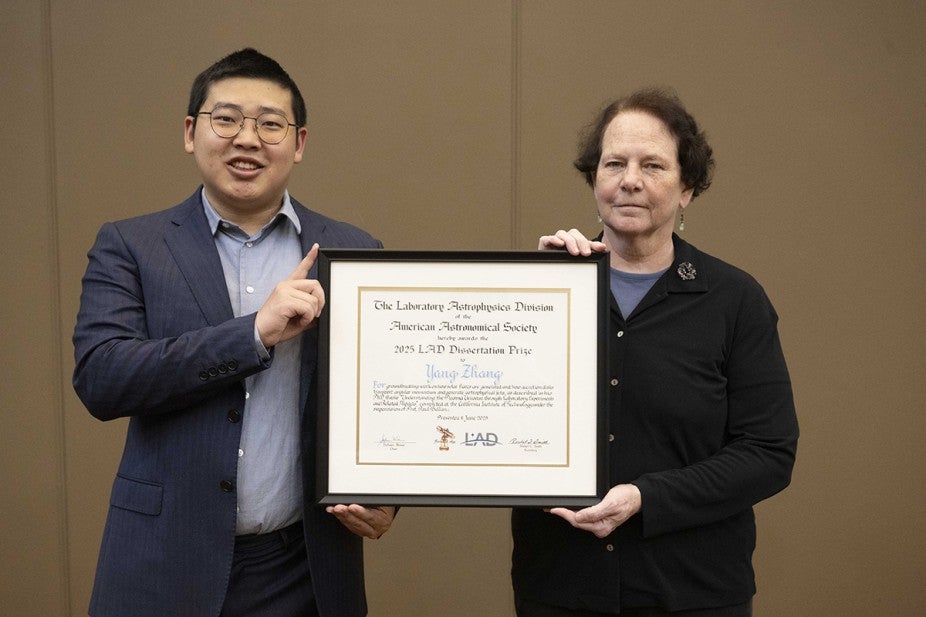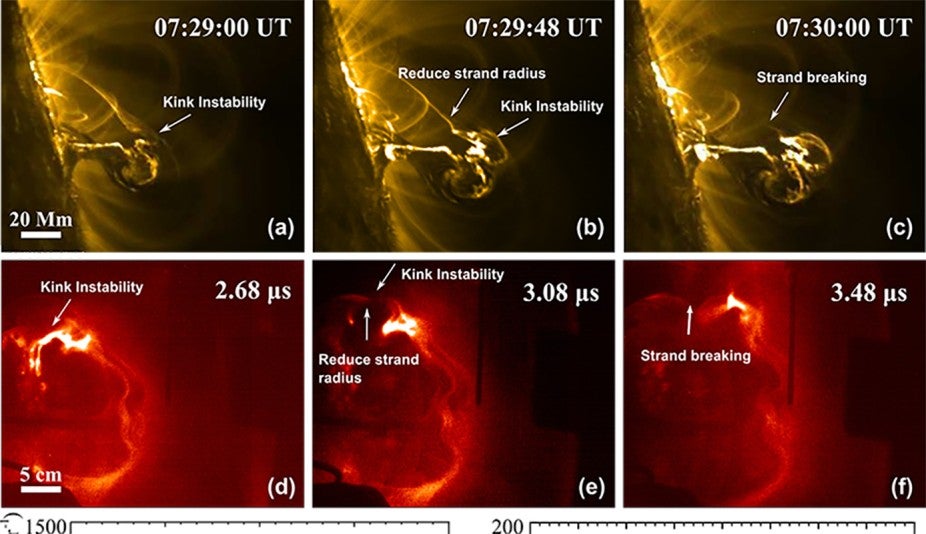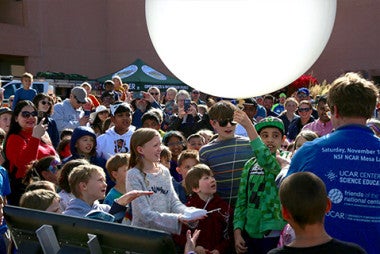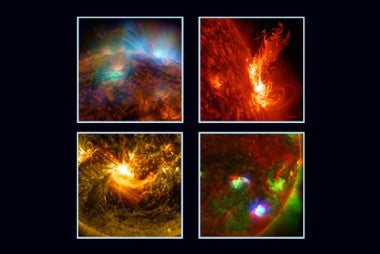Jack Eddy Fellow awarded dissertation prize for simulating solar flares in lab setting
NASA Jack Eddy Postdoctoral Fellow Yang Zhang’s research seeks to improve understanding of plasma dynamics as well as the mechanisms at play behind solar flare generation through investigations conducted in a laboratory.

NASA Eddy Postdoctoral Fellow Yang Zhang is the recipient of the 2025 Dissertation Prize awarded by the Laboratory Astrophysics Division (LAD) of the American Astronomical Society (AAS) for his research in plasma dynamics.
Credit: Yang Zhang
His thesis, Understanding the Plasma Universe through Laboratory Experiments and Related Models, has been selected by the Laboratory Astrophysics Division (LAD) of the American Astronomical Society (AAS) for its 2025 Dissertation Prize. The award recognizes an outstanding theoretical or experimental doctoral dissertation in laboratory astrophysics.
The NASA Jack Eddy Postdoctoral Fellow program was established jointly by NASA and UCAR | Cooperative Programs for the Advancement of Earth System Science (CPAESS) to train the next generation of heliophysics researchers by pairing them with scientists at U.S. research institutions. Yang worked with his thesis advisor, Professor Paul M. Bellan, at the California Institute of Technology (Caltech) in Pasadena, California.
Solid, liquid, gas – these three states of matter are well known. When temperature or energy increases, solids can become liquids and liquids can vaporize, becoming gas.
“But if a gas becomes hot enough that its atoms break apart into free electrons and ions, it transitions into plasma—the fourth state of matter,” says Zhang. This is the realm of his research. He notes that physicists generally agree that more than 99% of the visible or observable universe is composed of plasma – apart from dark matter and dark energy that are still not well understood.
“I call it the plasma universe,” says Zhang. “It is important because plasma is central to understanding the world. And as human beings, we want to understand everything.”

NASA Eddy Postdoctoral Fellow Yang Zhang accepted the Laboratory Astrophysics Division (LAD) Dissertation Prize at the 246th American Astronomical Society (AAS) Meeting in June 2025.
Credit: Yang Zhang
Researchers can readily employ instruments on Earth-observing satellites to study our planet’s atmosphere; however, due to the extremely high temperature of more than 1 million Kelvin of the solar corona, the sun’s outer atmosphere, it is not possible to place a satellite probe there to measure the physics. Researchers must rely on indirect measurements from ground-based or satellite-based telescopes or spectrographs but these measurements are limited by their resolution due to their distance.
As a result, laboratory experiments and the mathematical models that emerge from them have become important ways to learn more about the plasma universe. Zhang’s dissertation explores possible solutions to an important problem in the plasma universe, namely how solar flares are generated.
Solar flares are blasts of energy that erupt from arches of plasma known as coronal loops. The loops can extend up to 100,000 meters above the surface of the sun and are shaped by its magnetic field. (Source.) To replicate the generation of solar flares, the team at Caltech built a large vacuum chamber to scale the experimental parameters to the actual astrophysical parameters.
“The beauty of physics lies in its scalability,” says Zhang. “The same equations that describe vast astrophysical phenomena can also govern small-scale laboratory experiments. That’s what makes it possible to translate what we see in the lab to what happens in the cosmos.”
To generate a similar coronal loop structure, the team charged a capacitor, an energy storage device, with enough energy to run the City of Pasadena for a few microseconds, and discharged it to generate a plasma loop through twin electrodes. (Source.)

This image compares an observed solar flare (top) with one simulated in the CalTech lab (bottom).
Credit: Yang Zhang/CalTech
The resulting coronal loops were about 20 centimeters long – about the length of a banana – with a diameter of a few centimeters and reproduced the structure of those on the sun. “Importantly, the experiment also replicated the individual strands that composed the braid-like structure of the loops. They behaved in a similar way,” noted Zhang. When individual strands were disrupted or broken, bursts of energy, including high-energy X-rays, were emitted, mirroring the behavior of solar flares. Detailed investigations revealed a potential mechanism for solar flare generation on the sun.
For Zhang, there is great excitement and satisfaction in replicating an astrophysical phenomenon on a smaller, observable scale in the laboratory. “A lot of interesting experiments can be done with plasma physics, like garage experiments, to learn more about the physics of the universe and to build models based on those observations,” says Zhang. The research may aid scientists in learning more about plasma physics dynamics in the solar atmosphere and their impacts on Earth.
Zhang hopes to continue his research career in a university setting. Just as he benefited from a role model in Bellan, Zhang aspires to become a mentor and role model to his own students. “I would love to build a lab, but I also love teaching,” he says.
The results of Zhang’s research were first published in Nature Astronomy. His work was supported by the U.S. National Science Foundation and the Air Force Office of Scientific Research. Zhang accepted the LAD Dissertation Prize at the 246th AAS Meeting in June 2025.









